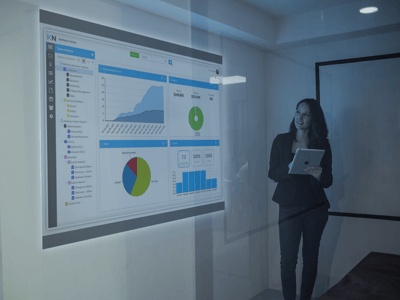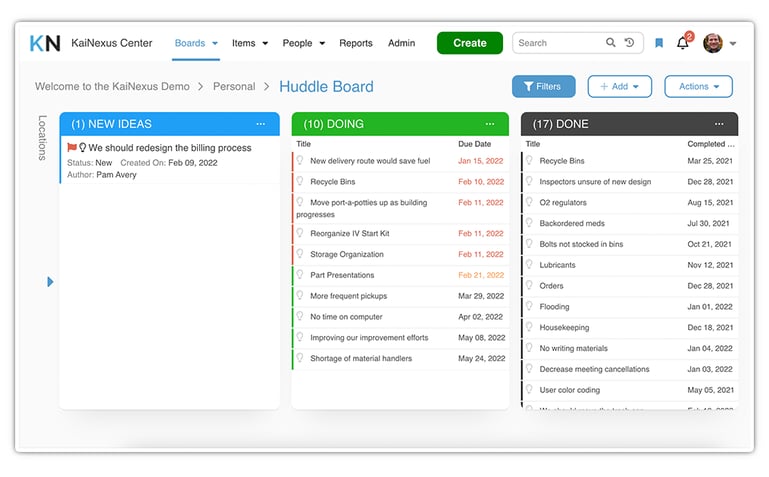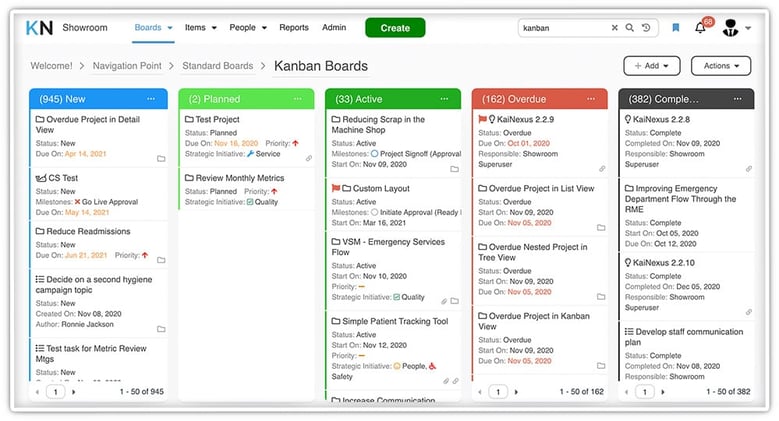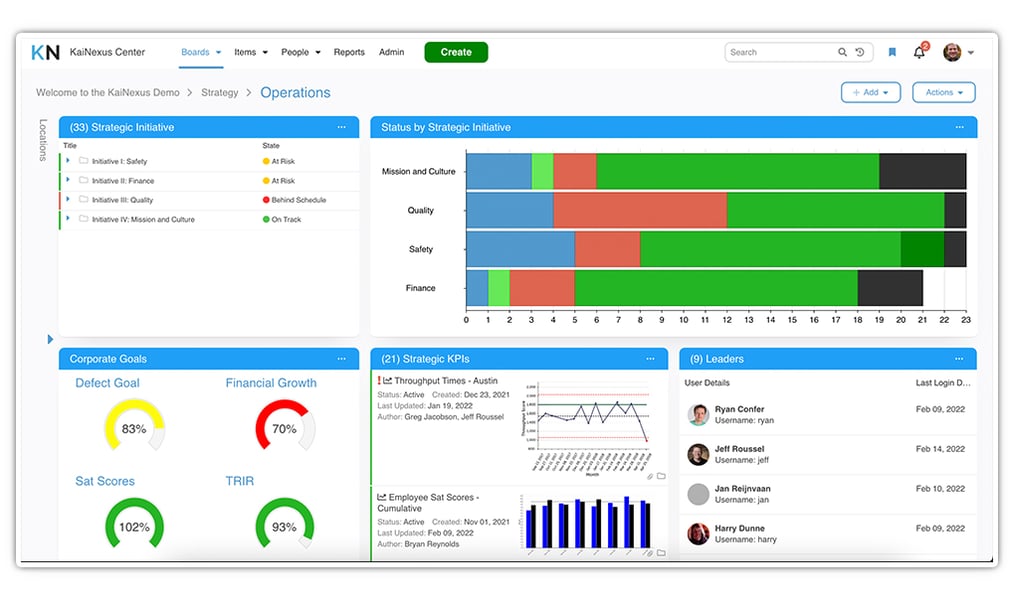 Organizations that embrace the continuous improvement approach to business management have lots of tools and techniques to choose from. Some teams leverage these approaches as part of a structured business methodology like Lean, Six Sigma, or Toyota Kata, while others use them independently. Continuous improvement software can be used to bring them all together in one platform dedicated positive change. Here’s how technology can support nine of the most popular CI tools.
Organizations that embrace the continuous improvement approach to business management have lots of tools and techniques to choose from. Some teams leverage these approaches as part of a structured business methodology like Lean, Six Sigma, or Toyota Kata, while others use them independently. Continuous improvement software can be used to bring them all together in one platform dedicated positive change. Here’s how technology can support nine of the most popular CI tools.
Catchball
The Catchball technique is often associated with strategic planning in Lean manufacturing, but it can be tremendously useful for other purposes as well. The simple premise of Catchball is to move ideas and information from one person or team to another. With each “toss,” more information and opinions are added until consensus on what to do next is achieved. The approach creates a cadence of communication that works top-down and bottom-up. Email isn’t ideal for Catchball because it is too easy for messages to be missed in a sea of unrelated messages. Improvement software creates a dedicated place for this kind of back and forth communication.
Huddle Meetings
Lots of organizations that practice continuous improvement use huddle meetings, often daily. During a huddle, the team gathers around a visual management board to talk about projects and identify problems that need to be solved. Process improvement software takes this from the wall into the cloud, making it possible for people to participate from wherever they happen to be effectively. It also makes the practice more useful by capturing the history of improvement work and helping leaders get insight into the health of improvement efforts across the organization.
Gemba Walks
During a Gemba walk, a manager or executive leader visits the place where work gets done to observe, show respect for the workers, and identify potential opportunities for improvement. Changes to processes aren’t made during the walk. They happen after it is over, and thoughtful analysis occurs. The improvement software platform becomes the place where each potential adjustment is captured and defined. It sets up the workflow for those opportunities that are selected for implementation.
The DMAIC and PDSA Improvement Cycles
DMAIC (Define, Measure, Analyze, Improve, Control) and PDSA (Plan, Do, Study, Act) are variations of the cycle for structured improvement. Each is designed to ensure orderly and effective change. Whichever cycle you choose, process improvement software is used to document each step, alert the right people when action is required, and measure the impact change. No matter how many times the cycle is repeated, all of the relevant information is available with just a few clicks.
Standard Work
Improvement software is used to support Standard Work in several ways. The process of crafting the Standard is tracked as an improvement, bringing together all of the stakeholders for collaboration. It also serves as an easily accessible home for the current Standard. When the Standard needs to be updated following a PDSA or DMAIC cycle, the process begins again.
Rapid Improvement Events
Improvement software helps ensure that Kaizen events and other rapid improvement events are successful by providing a unified platform for all work that will take place. Related documents can be uploaded for easy access, tasks can be assigned, and progress can be measured all in one online location. Ideally, the solution provides notifications and alerts that help maintain momentum and provide a structure for collaboration. This is especially important if the problem being addressed requires cross-functional effort. If new opportunities for improvement are discovered during a Kaizen event, software helps capture them for future projects.
Kanban
Kanban is a visual management technique used by improvement teams to spot any interruptions in flow before a backlog forms or grows too big. Cloud-based kanban boards help make process problems obvious so that managers are better able to take the proper steps to solve any issues.
Value Stream Mapping
Value stream mapping is a visual method of comparing the current state of a process or processes to a perfect state in which value is maximized, and waste is reduced. Software that only makes the map digital does little to support the underlying goal of improvement. Instead, the focus should be placed on technology that helps document, accelerate, and capture the results of opportunities for improvement.
Strategy Deployment
Strategy deployment, also called Hoshin Kanri, involves identifying a few breakthrough objectives that can be achieved in 3-5 years. Process improvement software supports this type of long-term planning by aligning each person’s goals with the overall strategy directly within the tool that they use for daily improvement work. This keeps the strategy top of mind and increases the likelihood of success.
Many of these tools can be used without software in place but deploying a solution purpose-built for improvement work increase their effectiveness and helps leaders more closely track how well they are working. A small investment in technology can have a tremendous impact.



Add a Comment